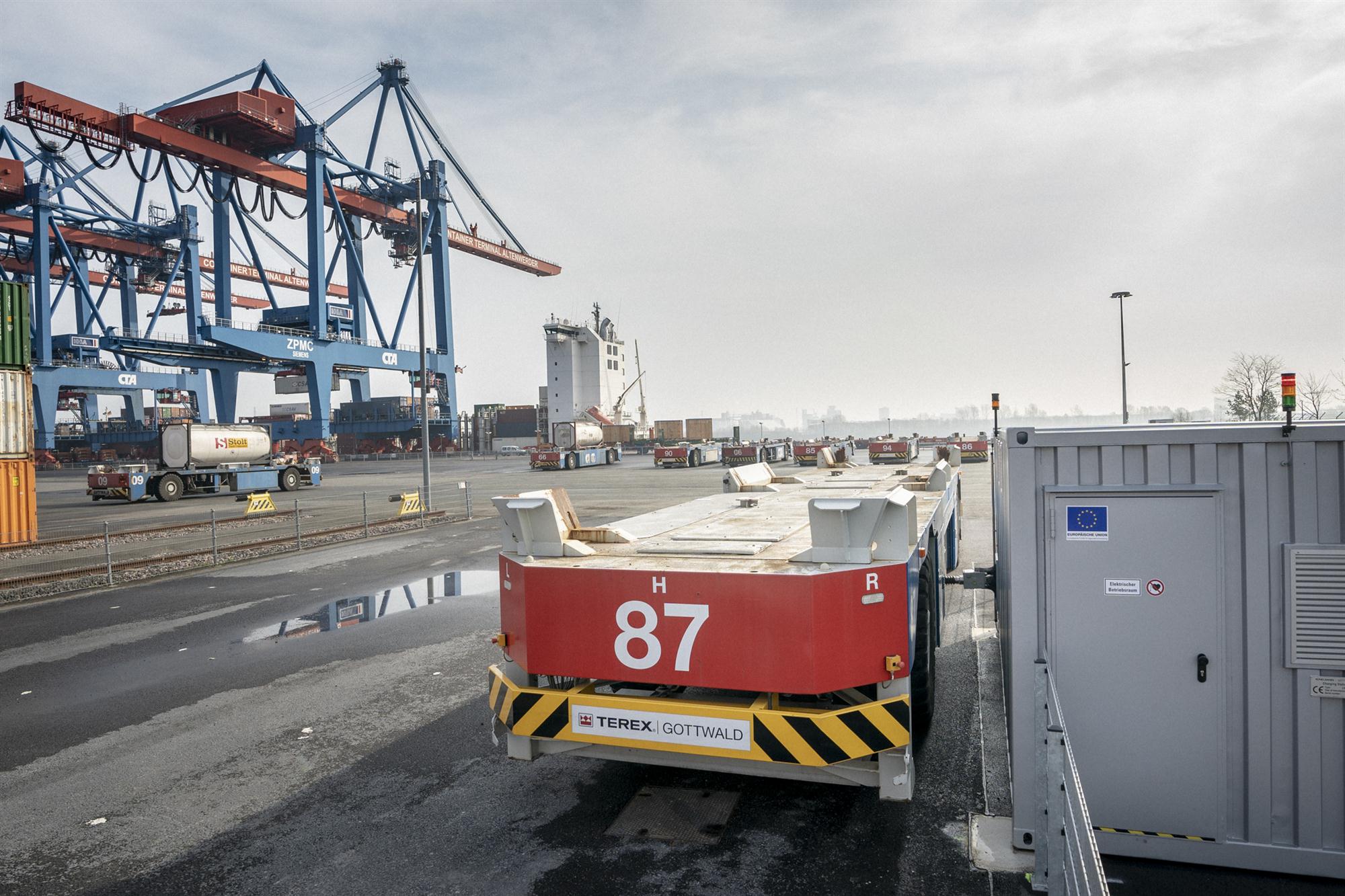Hamburger Hafen und Logistik AG will adopt the use of lithium-ion-battery-powered automatic guided vehicles to transport containers between ships and the yard at the Container Terminal Alternwerder.
According to HHLA, the new vehicles are three times more efficient than their diesel-powered counterparts and the use of green energy prevents any CO2, nitric oxide or particulate matter from being emitted.
Hamburg’s Ministry of Environment and Energy will provide approximately €8 million (US$9.9 million) in funding from the European Regional Development Fund for the project.
“With the high level of automation at CTA, the terminal is already leading the way for container handling of the future,” said Angela Titzrath, chairwoman of the executive board at HHLA. “HHLA is making yet another contribution to the Ministry’s air purification plan by using container transporters powered by lithium-ion batteries. HHLA takes its responsibility to protect the climate and reduce noise pollution in the Port of Hamburg, and has been implementing measures for efficient and sustainable container handling for many years. The self-imposed target to reduce CO2 emissions per container by 30% compared to 2008 has been achieved ahead of time. We will now set ourselves new targets, combining entrepreneurial vision, social responsibility and the sustainable use of resources.”

An AGV prototype and an electric charging station have already been in operation at the CTA since autumn 2016. Six charging stations have since been installed at the terminal, and 25 AGVs will go into operation over the coming weeks. By the end of 2022, the terminal will have a total of 18 charging stations and a fleet of almost 100 AGVs completely powered by lithium-ion batteries. This will result in an annual reduction in emissions of approximately 15,500 tonnes of CO2 and around 118 tonnes of nitrogen oxide.
“HHLA is implementing an exciting project in Altenwerder that will have three positive effects from the outset: it saves CO2 and thus helps protect the environment, it reduces nitric oxide emissions, which in turn reduces air pollution, and, to top it all off, it serves as a flexible storage solution therefore further advancing the energy transition,” said Jens Kerstan, Hamburg’s minister of environment and energy. “The proportion of renewable energy in the grid fluctuates depending on the amount of sunshine and wind strength which is why we need innovative technical solutions for interim storage and flexible energy consumption. HHLA is clearly showing how this can work and we are therefore supporting this project with approximately €8 million. The energy transition is only possible if all actors and components in the energy system are linked intelligently with the help of digital processes.”
The lithium-ion batteries weigh just four tonnes each, eight tonnes lighter than lead batteries, and are charged in an hour and a half. They also do not require any upkeep, unlike lead acid batteries.
If there is no wind over the North Sea when the container transporters are at the charging stations, software will signal that the batteries should feed energy back into the grid. On the other hand, if the offshore wind turbines are turning particularly fast and a large amount of solar energy is being generated, the batteries will receive a signal to begin charging. This allows HHLA to offer the container transporters as flexible power storage units with an output of approximately 2MW on the energy market, using intelligent interconnectivity.
The project at the CTA is supported by the Ministry of Environment and Energy and the ERDF as part of the “Energy Transition in Companies” research project, under which the fund will provide Hamburg with approximately €55 million (US$68 million) between 2014 and 2020 to increase investment in growth and employment, according to HHLA.




